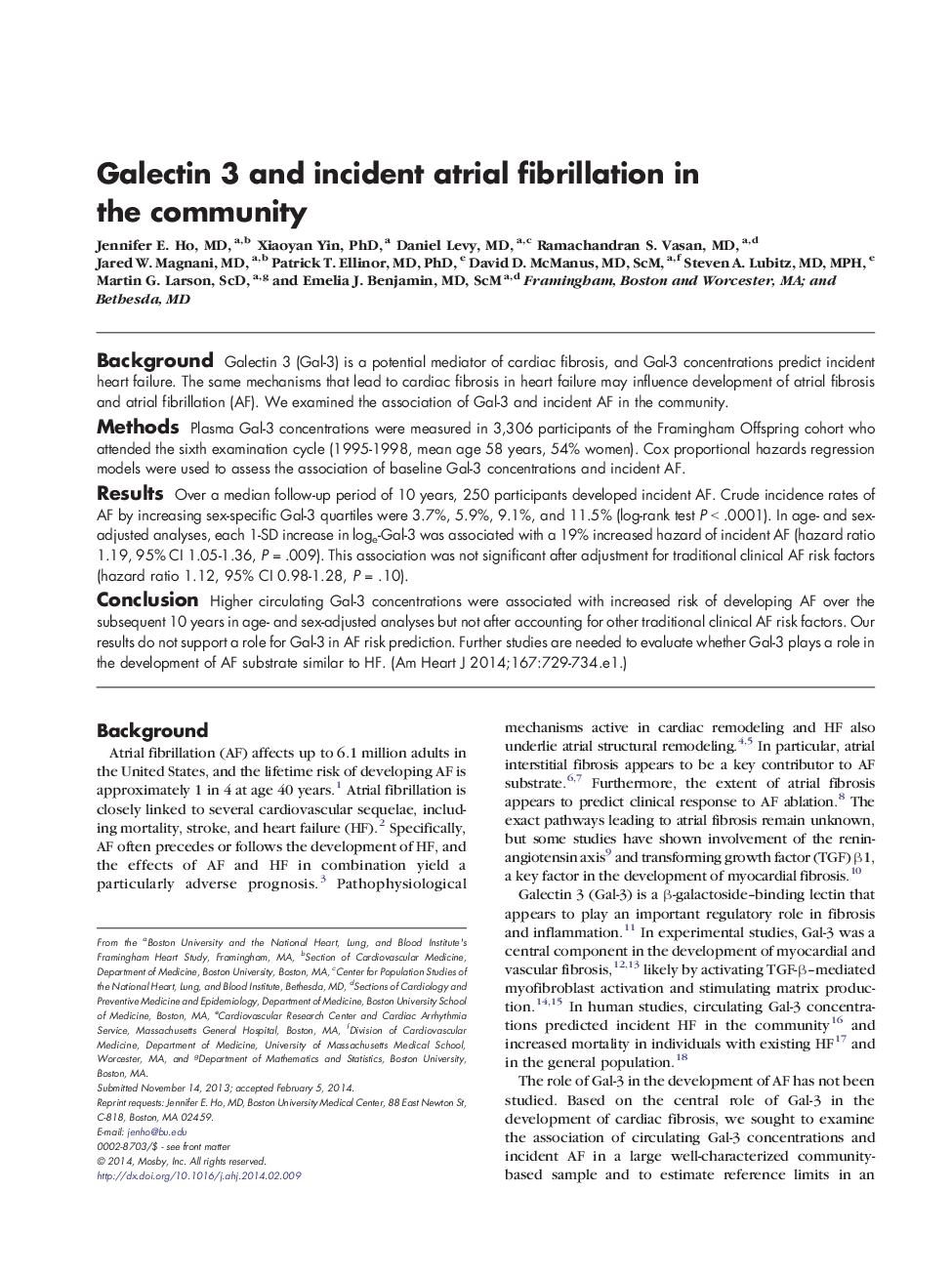| Article ID | Journal | Published Year | Pages | File Type |
|---|---|---|---|---|
| 5928424 | American Heart Journal | 2014 | 7 Pages |
BackgroundGalectin 3 (Gal-3) is a potential mediator of cardiac fibrosis, and Gal-3 concentrations predict incident heart failure. The same mechanisms that lead to cardiac fibrosis in heart failure may influence development of atrial fibrosis and atrial fibrillation (AF). We examined the association of Gal-3 and incident AF in the community.MethodsPlasma Gal-3 concentrations were measured in 3,306 participants of the Framingham Offspring cohort who attended the sixth examination cycle (1995-1998, mean age 58 years, 54% women). Cox proportional hazards regression models were used to assess the association of baseline Gal-3 concentrations and incident AF.ResultsOver a median follow-up period of 10 years, 250 participants developed incident AF. Crude incidence rates of AF by increasing sex-specific Gal-3 quartiles were 3.7%, 5.9%, 9.1%, and 11.5% (log-rank test P < .0001). In age- and sex-adjusted analyses, each 1-SD increase in loge-Gal-3 was associated with a 19% increased hazard of incident AF (hazard ratio 1.19, 95% CI 1.05-1.36, P = .009). This association was not significant after adjustment for traditional clinical AF risk factors (hazard ratio 1.12, 95% CI 0.98-1.28, P = .10).ConclusionHigher circulating Gal-3 concentrations were associated with increased risk of developing AF over the subsequent 10 years in age- and sex-adjusted analyses but not after accounting for other traditional clinical AF risk factors. Our results do not support a role for Gal-3 in AF risk prediction. Further studies are needed to evaluate whether Gal-3 plays a role in the development of AF substrate similar to HF.
